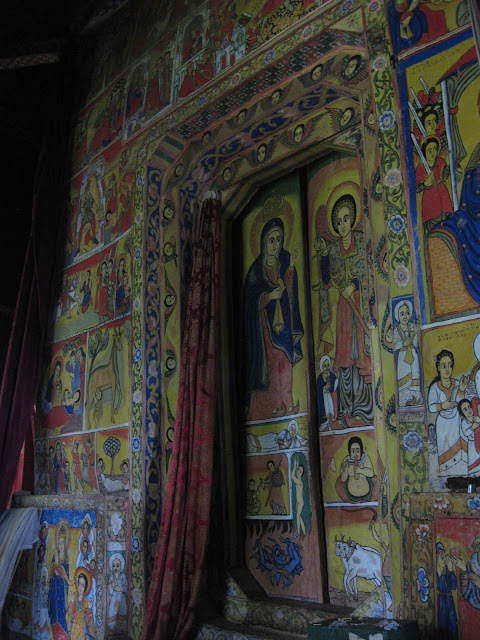One fact of life in the upper income bracket of a poor
country—for an expat or a local—is that you’ll likely have domestic help, and
that it will be provided by a person of a much lower socioeconomic status.
When I joined my shared apartment we had a maid coming one
and a half days a week to sweep, scrub, and do laundry by hand. She spoke and
wrote serviceable English, and for the most part she reliably delivered a
quality service. For this we paid her a total of just under $75 a month, split
across the four of us in the apartment.
Periodically, debates appear on Addis’s online expat forums
of what the “right amount” is to pay your maid. Typical viewpoints from each
side:
- How would you like to be paid only (small amount) per month?
- (Same small amount) is already more than a policeman makes here
Overall, the expats I know all pay their maids well over the
going rate among locals (which could be as low as $30/month for the same
services described above or more). And it’s relatively uncontroversial that
maids who speak good English, can cook foreign dishes, are good with children,
etc. can expect to be paid more.
Ultimately, what I’m building up to here is that our maid
asked for a substantial raise, and rather than discuss or negotiate with her,
our consensus as flatmates was to sack her and find a new maid.
We paid the requisite severance—custom apparently is to
prorate this based on how many months the maid has worked for you—and the new
maid we took on was out of work after being much beloved by colleagues who had
moved on from their old house to places with already established maid
situations.
The former maid gave us the impression that her ask for more
money originated in part because she had more lucrative clients on other days
of the week, such that it was no longer worth it for her to clean our house at
the previous rate. The new maid on the other hand was happy to work three days
a week at the rate we’d previously been paying for two days.
This rate, by the way, adds up to less in a month than I was
paying individually in DC for one morning of cleaning, and that’s even before I
split the rate across the four of us. (Not that the US doesn’t have its own
economic inequality issues).
I rarely ever saw the old maid, or see the new maid, because
each usually arrives after I’ve left for the office. From my limited
encounters, both are fairly young traditionally Ethiopian women, expressing
themselves quietly and wearing white shawls.
One more story: I recently heard of an expat in Addis who,
upon leaving the country, was forced to let go her maid of two years. This
woman also had “guards” at her house (basically someone who sits in a shed and
guards the compound gate) who she liked well enough to leave some electronics for
as well as arrange new jobs. The maid got no such deal—just a customary
severance payment and a letter of reference. On the woman’s second to last day
in the country, the maid helped herself to several hundred dollars worth of
electronics and clothes on her way out.
All of which is to say, the benefit of cheap domestic labor
can certainly be great, but it puts one in situations calling for complex economic
and moral decision-making. And—at least for someone like myself who likes to
hold life to as little complexity as possible—this makes it a double-edged
sword.


.jpg)







